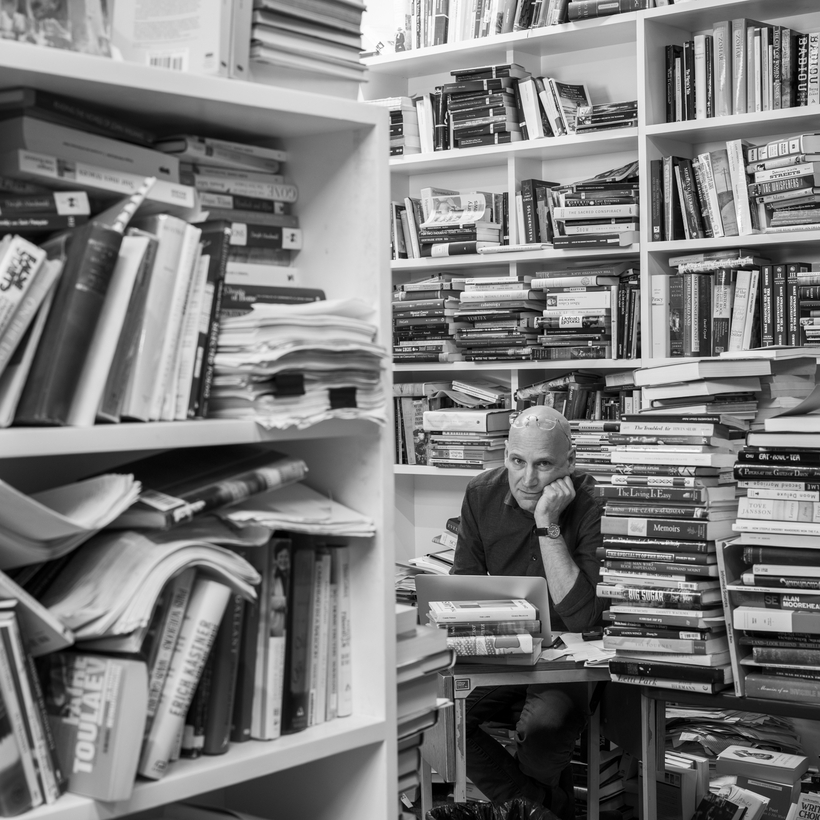Founded in 1972, the imprint Lost American Fiction had a mission to reintroduce wrongly forgotten books. It had reprinted 29 of them by 1979, at which point the series was itself consigned to oblivion. Prion Lost Treasures brought out 26 before suffering the same fate. Ecco Neglected Classics only made it to 21. There is something poignant about coming across a volume labeled “lost” or “neglected” in a used-book store, the designation having become prophecy, but the earthward trajectory of these quixotic enterprises is unfortunately all too predictable.
Which is why the 20th anniversary of New York Review Books Classics—they hit 500 last year, with Wolfgang Herrndorf’s Sand—is such an improbable milestone. That an imprint devoted to out-of-print texts and works in translation has managed not just to weather the new millennium’s disruptions but to grow—and even to spawn imitators—is nothing short of a miracle. It would be difficult to think of a less commercially minded venture in the early 21st century, and only someone innocent of any publishing experience could have made it a success. This week, one of the writers they publish, Peter Handke, was awarded the Nobel Prize in Literature, a decision that was met with controversy because of Handke’s views during the Balkan conflicts of the 1990s. “Just last night I was saying he’d never get the Nobel because of his political history, but I am happy to be proved wrong,” said Edwin Frank, the founder and editor of NYRB Classics, in an e-mail the morning of the announcement.
Frank often says the series “came into existence crabwise.” The 59-year-old son of two Midwestern college professors, he had spent several years at Columbia “not getting a Ph.D.” in art history before coming to the conclusion that he really didn’t want to be an academic. Then, in his early 30s, with a wife and two children, he took a job in the summer of 1996 at The Reader’s Catalog. Started by Jason Epstein, the father of the acid-free paperback and a co-founder of the New York Review of Books journal, The Reader’s Catalog was a direct-to-consumer, phone-book-like compendium of the 40,000 best books in print for anyone whose local bookstore had lost the competition with Barnes & Noble. (With the rise of Amazon, it became clear that Epstein was fighting the last war.)
It would be difficult to think of a less commercially minded venture in the early 21st century.
In the course of compiling those 40,000 entries, Frank found himself making a second list of books, including Richard Hughes’s A High Wind in Jamaica and Alberto Moravia’s Contempt, which, to his surprise, had gone out of print between the first and second editions of the catalogue. “Since I didn’t work in publishing,” he has said, “it took me a while to figure out that they weren’t in print because they wouldn’t sell.” Nobody, it seemed, was very interested in the non-canonical books of the past, whatever their qualities. Nobody but Frank, who brought this second list to Rea Hederman, the publisher of The New York Review of Books, with a proposal to start what in the fall of 1999 became NYRB Classics. “There is no question it was a high-risk undertaking,” Hederman says. “A number of persons in publishing advised against it.”
Frank uses the word “classic” with some reluctance. “‘Classic’ is an abused word in America, where cookies and shoes are classics,” he said in a radio interview last year. In any case, the books’ striking design is the first clue that these are not “classics in the classic sense.” While the series, designed by Katy Homans, shares some characteristics with Germano Facetti’s covers for Penguin Classics—the box containing the title and author, the frequent use of existing artwork—the irreverent cropping and unusual color combinations set it apart. The books seem somehow important without looking like homework. The uniform aesthetic is also an inexpensive way of encouraging a reader who has enjoyed one book in the series to take a chance on another—and maybe even to post a picture of it next to a cup of Fair Trade coffee on Instagram.
That’s how it went for me, minus the Instagram part. I started with Jessica Mitford’s Poison Penmanship and Murray Kempton’s Part of Our Time, both of which I probably would have discovered sooner or later. But I sensed I was in good hands and began to roam around the series more freely. After picking up Leonardo Sciascia’s The Day of the Owl and Robert Sheckley’s Store of the Worlds—two very different books I might never have read, if not for the NYRB Classics seal of approval—my trust in the imprint’s modest, pill-shaped colophon was total.

In truth, these books—Dorothy Baker’s Cassandra at the Wedding, Robert Burton’s The Anatomy of Melancholy, Kenneth Fearing’s Clark Gifford’s Body, and Antonio di Benedetto’s Zama, to name a few at random—have nothing in common except for the high opinion of Frank and his staff. But it is that deeply informed subjectivity—taste, in other words—that accounts above all for the loyalty of their readers.
“The remarkable intuition, range, and sensibility of Edwin Frank revived a whole cultural community,” says Renata Adler, whose novels Speedboat and Pitch Dark were republished by NYRB Classics in 2013. “Readers are now able to buy in paperback, not just wonderful books we knew about and could no longer find, but great books we might never have known,” she adds, citing the work of Vasily Grossman and the restored text of Walt Whitman’s Drum-Taps, a volume in the NYRB Poets series.
The design is an inexpensive way of encouraging a reader to take a chance on another book—and maybe post a picture of it next to a cup of Free Trade coffee on Instagram.
Frank and his managing editor, Sara Kramer, rely on an informal brain trust for recommendations. “It’s not as if the board meets and we discuss it,” he says. “There’s kind of a constant stream of things coming in. Actually, it’s more of a flood at this point.” Jonathan Lethem and Luc Sante are responsible for a handful. John Williams’s Stoner, the imprint’s biggest hit to date—a novel that sold fewer than 2,000 copies in 1965 and several million since its 2006 reissue—was suggested by the antiquarian-book seller John Doyle. Divorcing, by Susan Taubes, which is being republished next year, came through the online suggestion box.
I ask Frank if he is optimistic about the future of the book. “Right now, we’re at a moment when, for political reasons, there is a tendency to see art entirely in terms of its representativeness,” he says. “I could imagine that slowly unmaking a certain understanding of art. If you see all speech as an action, then speech could become really limited.” He goes on to say that “books exist in a larger cosmos of information, which seems to be expanding at a terrifying speed that could make art as it emerged between the 18th and 20th centuries seem like a relic.”
Glancing around Frank’s office, its shelves containing many first editions of future NYRB Classics, I point out that the bound book, like the bicycle, has proved to be a surprisingly hardy technology. “It’s sort of vaguely reassuring,” he says, “to think that at the end of civilization, amongst all the plastic bags, there’ll probably still be some books too.”
Ash Carter is the Articles Editor for Air Mail


